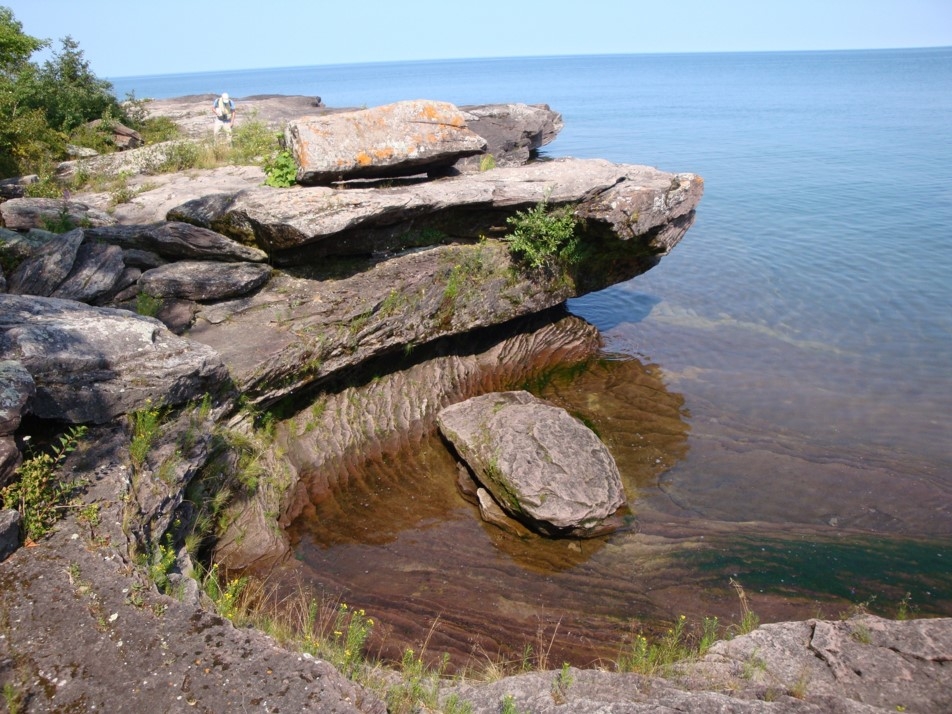Lakeshore Cliff/Bluff Group

Lakeshore Cliff/Bluff systems are sparsely vegetated communities on vertical or near-vertical exposures of bedrock or steeply sloping bluffs of clay along the Great Lakes shorelines or along rivers draining into the Great Lakes. Bedrock types that support Lakeshore Cliff/Bluff include limestone, sandstone, granite, and volcanics. There is almost no soil development on these bedrock cliffs except where shallow mineral and organic deposits accumulate along the narrow cliff summit and ledges, in crevices in the cliff face, and at the base of the cliff. Clay bluffs is characterized by eroding alkaline clays. Although these Lakeshore Cliff/Bluff systems experience high levels of moisture due to their proximity to the Great Lakes, plant growth and establishment are limited by the lack of suitable substrate, desiccation, constant erosion, and direct exposure to waves, wind, and ice.
Five natural community types fall within the Lakeshore Cliff/Bluff group, including clay bluffs, limestone lakeshore cliff, sandstone lakeshore cliff, granite lakeshore cliff, and volcanic lakeshore cliff. Classification of these Lakeshore Cliff/Bluff types is based on differences in substrate composition, species composition, community structure, and natural processes.
Citation
Cohen, J.G., M.A. Kost, B.S. Slaughter, D.A. Albert, J.M. Lincoln, A.P. Kortenhoven, C.M. Wilton, H.D. Enander, and K.M. Korroch. 2020. Michigan Natural Community Classification [web application]. Michigan Natural Features Inventory, Michigan State University Extension, Lansing, Michigan. Available https://mnfi.anr.msu.edu/communities/classification. (Accessed: October 9, 2025).

